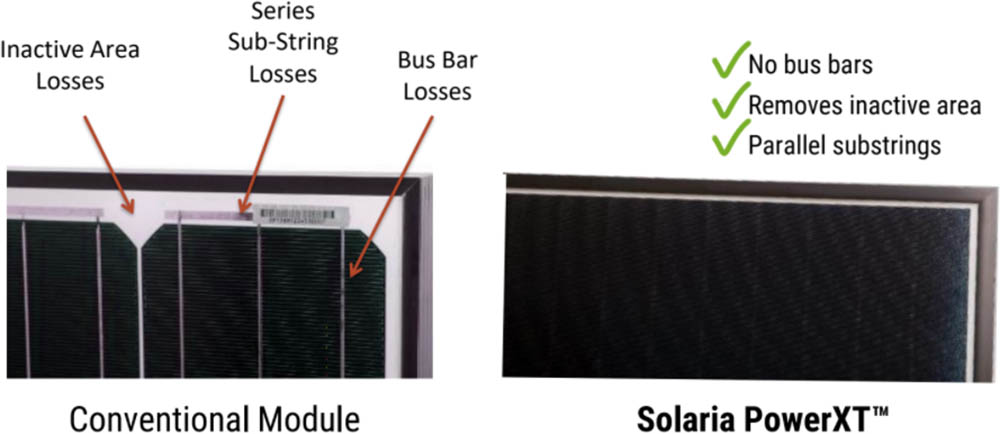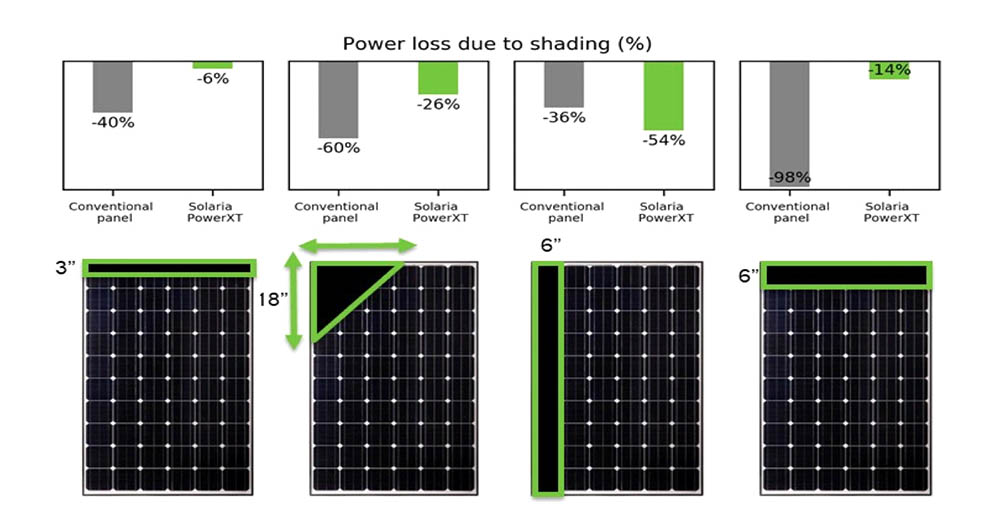Shingled solar cells are solar cells which are cut into typically 5 or 6 strips. These strips can be overlaid, like shingles on a roof, to form the electrical connections. The strips of solar cells are joined together using an electrically conductive adhesive (ECA) that allows for conductivity and flexibility.
 |
| Shingled solar cell |
| Shingled solar cell – end elevation |
This allows the cells to be connected differently to conventional solar panels, in that, there are no busbars (ribbons) required and the solar cells can be joined together resulting in no gaps between the solar cells.
Shingled solar modules can also be wired differently to conventional solar panels. Typically, solar cells in conventional solar panels are wired in a series of strings whereas the solar cells in shingled panels can be wired in parallel configuration.
What are the advantages of shingled solar panels?
Essentially the three key advantages of the shingled solar panel design are they produce more power, improve reliability and are aesthetically pleasing.
1. Increased energy harvest
Higher power per square metre
The shingled solar cells do not require busbars across the top of the cells so more of the solar cells are exposed to sunlight. The cells do not need to be spaced apart like in conventional solar panels so the solar panel area can produce more energy.
 |
| Comparison between conventional solar panel and Solaria shingle solar panel |
Less energy loss due to shading
Conventional solar panels have the individual cells wired in series so when a part of the solar panel is shaded it can have a significant effect on the level of power output. By configuring the solar cells in shingles, they can be wired in groups and configured in parallel which significantly reduces the losses caused by shading.
 |
| Current flow comparison |
Below are some examples of shading and losses for a conventional solar panel and a shingled panel. The Shingled panels have greater performance except for the vertical shading example.
 |
| Outdoor shade testing over a 70-day period has shown that the shingled solar panel performs between 37 to 45% better than conventional solar panel designs. |
2. Better reliability
Low busbar failures
Shingle solar panels do away with approximately 30 metres of busbar and soldered joints that is required on conventional solar panels, so busbar failures are reduced.
Better mechanical performance
Static and dynamic load tests show that the shingle approach is more resistant to failure due to external forces being applied to the solar panel compared to conventional solar panels.
3. More attractive
Shingled solar panels have no visible circuitry which give them clean simple look providing superior street appeal.